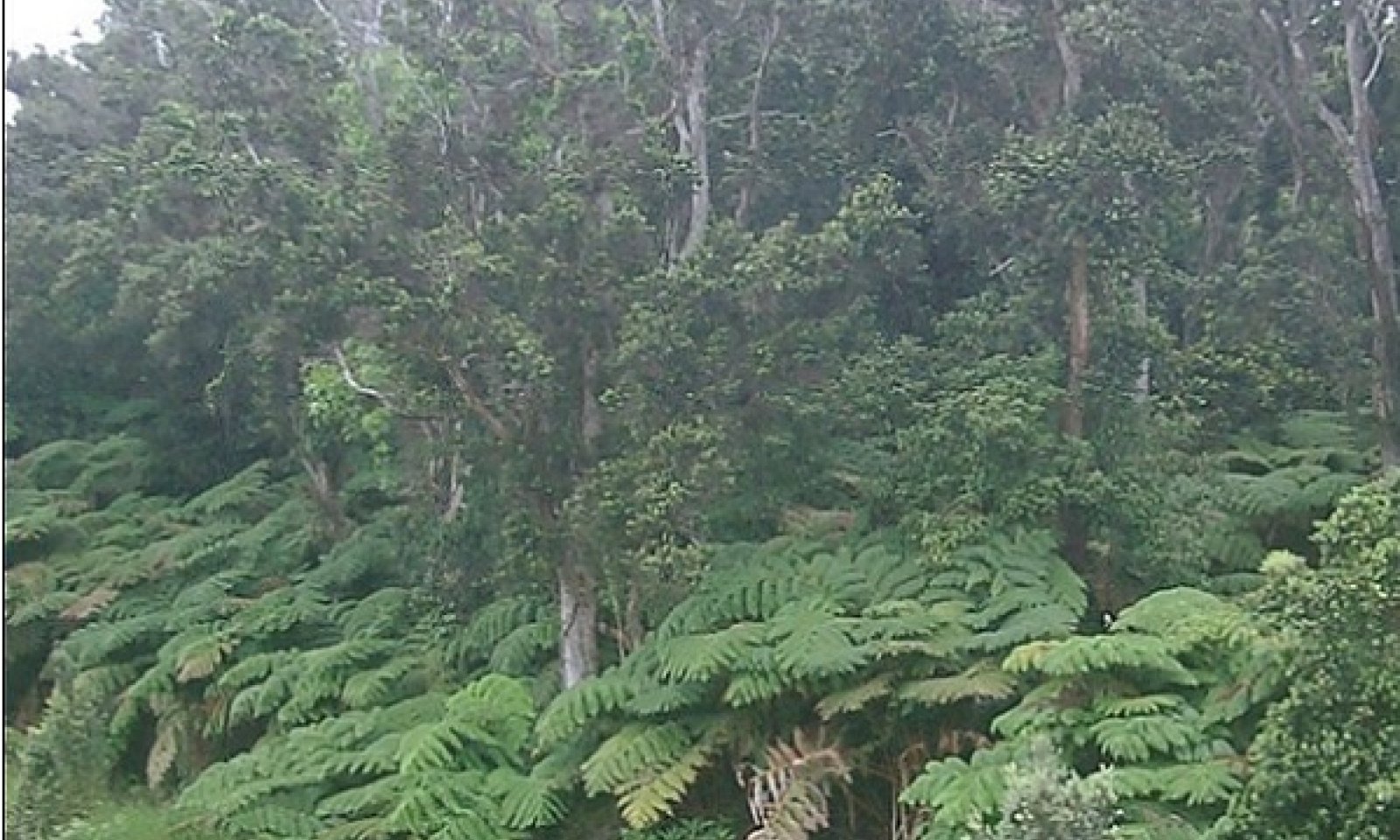
Udic Forest
Scenario model
Current ecosystem state
Select a state
Management practices/drivers
Select a transition or restoration pathway
- Transition T1A More details
- Transition T1A More details
- Transition T1B More details
- Restoration pathway R2A More details
- Transition T2A More details
- Transition T2B More details
- Restoration pathway R4A More details
- Transition T4A More details
- Transition T4B More details
- Restoration pathway R5A More details
-
No transition or restoration pathway between the selected states has been described
Target ecosystem state
Select a state
State 1
Reference State




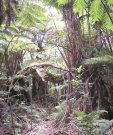

Description
The Reference State consists of one plant community. Under a regime of natural disturbances, this community has probably been stable through post-glacial time frames and from a broad-scale spatial perspective. A matrix of variations in canopy cover and species composition in all canopy levels is observable. This matrix variability does not appear to be connected to soils, climate, or landscape features, but rather is probably due to wind throw, deaths of large trees, and other chance occurrences.
Submodel
State 2
Naturalized Grassland State
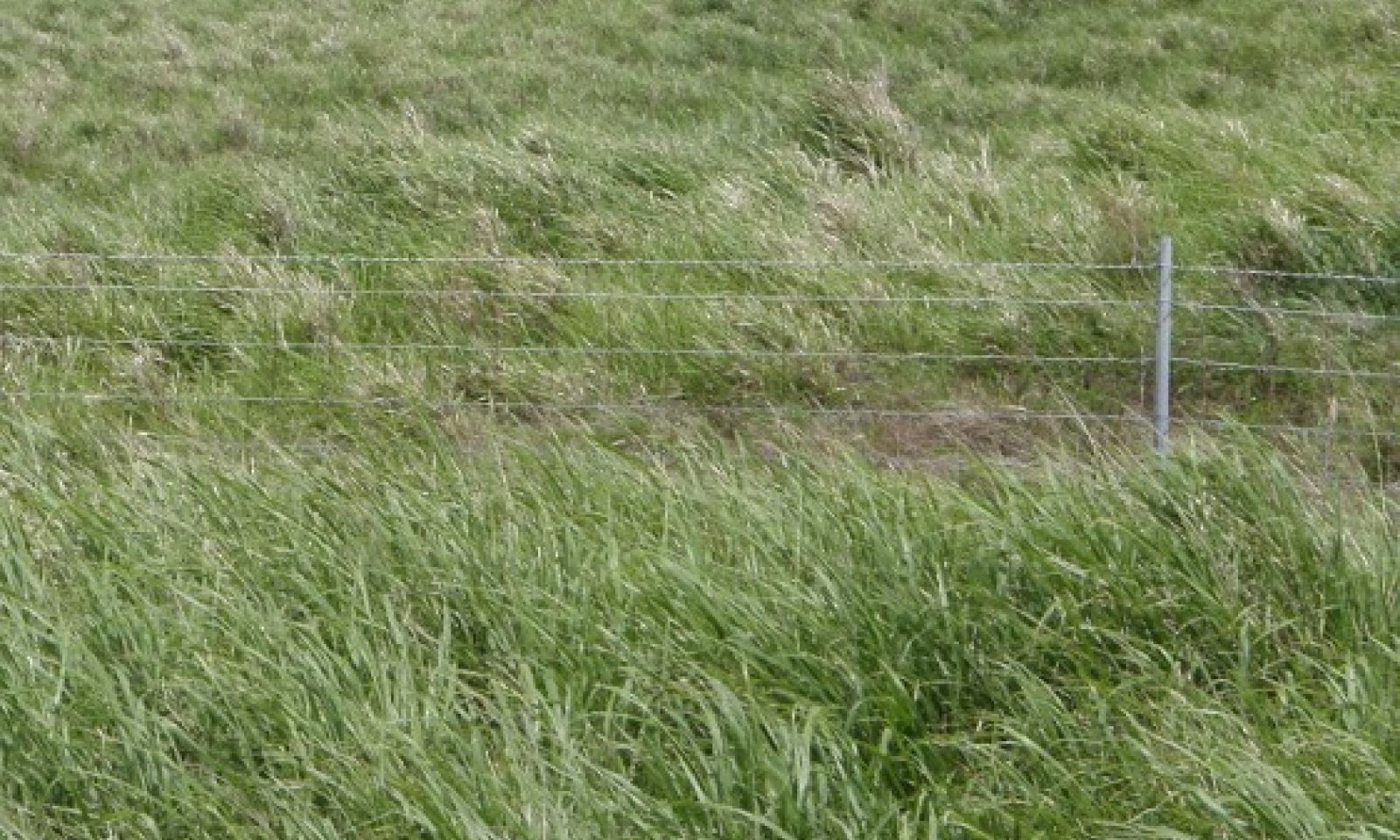




Description
This state is comprised of three community phases. Most of the grasslands are on former sugar plantations where guineagrass was an agricultural weed. Guineagrass now has taken over these lands as the dominant species. Kikuyugrass is the dominant grass, sometimes with pangolagrass, in some higher elevation areas where these species have been planted. Most of these areas are now being reforested. Some parts of Kapapala Ranch appear to be in a transitional area between guineagrass and kikuyugrass dominance. Information on these kikuyugrass/pangolagrass pastures can be found in Ecological Site Description F160XY504 Ustic-Dry Udic Forest.
This state consists of three grassland community phases. These phases are maintained by grazing, which keeps preferred species from becoming too tall, and adequate recovery periods, which ensure vigor and cover of preferred species. High production of preferred grass species and extensive cover allow for increased soil moisture retention, vegetative production, and overall soil quality. These factors are degraded by grazing practices that result in loss of preferred grass species leading to increase in less desirable grasses, weed invasion, and an increase in the extent of bare soil.
Prescribed burning generally is not allowed due to high risks to structures, fences, and native forest stands. Wildfires caused by lightning or arson sometimes occur. They are very intense and difficult to contain, because guineagrass produces huge amounts of fuel and grows to a height of almost 10 feet (3 meters), while kikuyugrass produces large amounts of fuel and has rhizomes that can smolder underground for days, sometimes reigniting a surface fire.
Most of the grasslands in this ecological site are on former sugar plantations where guineagrass (Urochloa maxima) was a species of roadsides and waste areas (Earl Spence, rancher and manager, personal communication). Guineagrass now has taken over these lands as the dominant forage grass. All grass, sedge, forb, vine, shrub, and tree species found in this state have been introduced to Hawaii by humans within the past two centuries, either inadvertently or intentionally. Scattered, remnant native trees, either koa or ohia lehua, sometimes occur in these naturalized grasslands, but they are unable to reproduce without protection from ungulates and control of grasses and weeds. Occasionally, western brackenfern (Pteridium aquilinum) and uluhe or Old World forkedfern (Dicranopteris linearis) occur; both of these fern species are native to Hawaii.
Community Phase 2.1 mostly consists of guineagrass, sometimes with an admixture of glycine or perennial soybean (Neonotonia wightii). Continuous grazing that does not allow the preferred forage species to recover from defoliation results in Community Phase 2.2, which is dominated by lower value grass species but contains enough remnant guineagrass to allow for a shift back to Plant Community 1 with prescribed grazing. Longer-term continuous grazing leads to Community Phase 2.3, which consists of low value grass species and increasing cover of alien shrubs and tree saplings. Improvement of this Plant Community requires weed control followed by prescribed grazing.
Submodel
Description
This state consists of one community phase, which is a plantation of introduced timber tree species that have been established on former sugarcane or grazing lands. With typical management, it is not susceptible to unplanned transitions or restorations to other states.
Submodel
State 4
Invaded Understory State
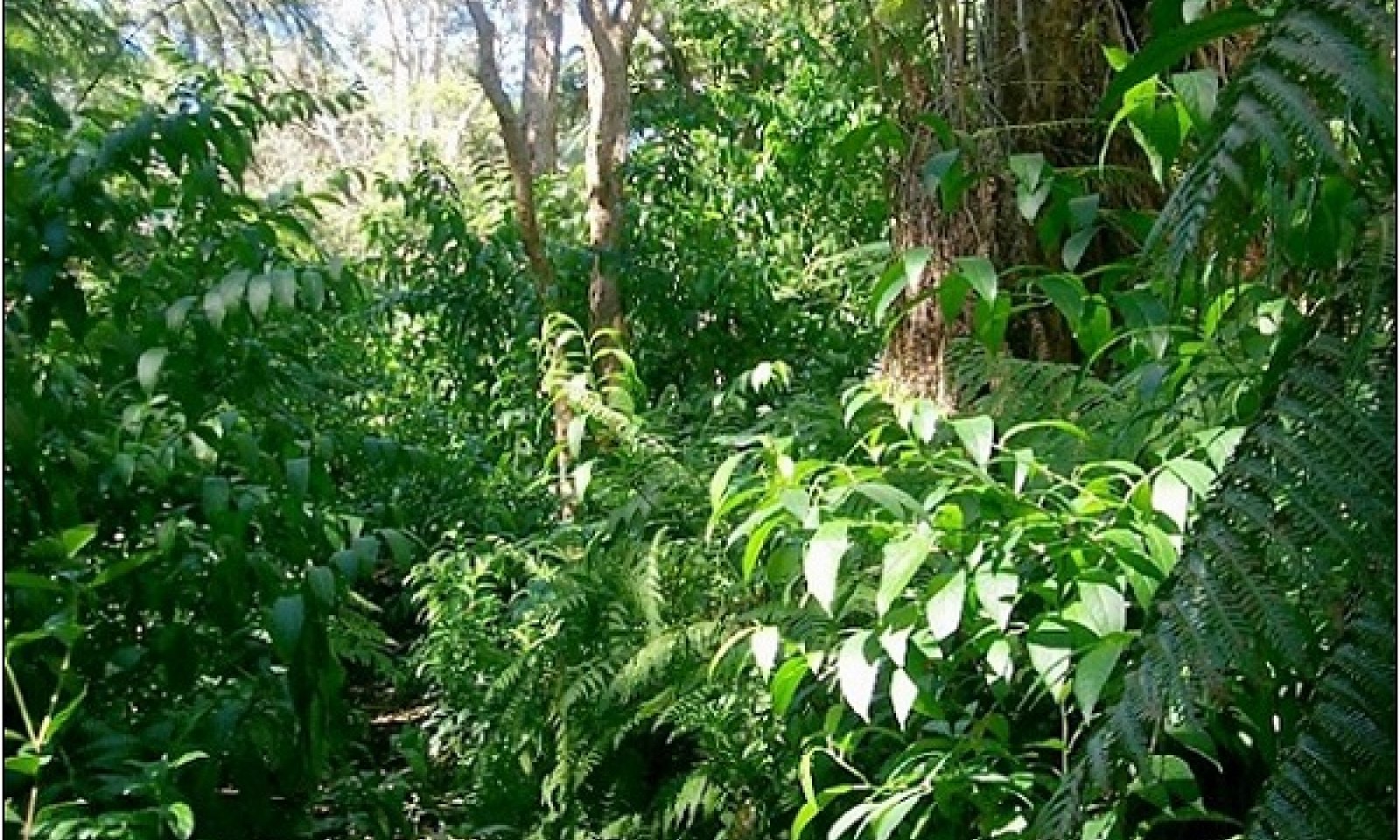


Description
This state consists of one community phase. It arises by invasion by introduced species of intact native forest (the Reference State) or, in some cases, of native overstory stands from which the original understory has been cleared. Native species are unable to regenerate in the highly competitive understory of introduced plants and eventually die out. With time, large introduced tree species will emerge to replace the native overstory trees and form a new overstory. When this last step has occurred, the site will have transitioned to State 5, Invaded Overstory and Understory State.
Disturbance of the soil and direct damage to native understory plants by introduced ungulates, particularly pigs and cattle, will speed the transition to this state by killing native plants and by creating better germination sites for introduced species.
Restoration to the Reference State or a facsimile of it is possible by fencing the site, removing all ungulates, applying herbicides, and replanting native species when needed. Restoration efforts will be affected depending on the degree of invasion by introduced species and by the particular species that have invaded the site. Long term weed management and fence maintenance will be necessary.
Submodel
Description
This state is comprised of one plant community dominated by introduced species in both the overstory and understory. Understory vegetation usually is very sparse to nonexistent. Remnant individuals of a few native species may persist. This state might be considered a dead end as far as further succession or transition to another state.
Restoration to a facsimile of the Reference State could probably be done with expensive and intensive practices followed by long-term weed management. Clearing of the site followed by establishment of an overstory of noninvasive, introduced timber trees with a native understory as an intermediate step to native forest restoration may be worth exploring.
Submodel
Mechanism
State 1, Reference State, can transition to State 2, Naturalized Grassland, by clearing the forest with heavy machinery or by gradual clearing by allowing cattle access to the forest. Cattle eventually eat or destroy understory ferns, forbs, shrubs, and saplings, opening up the forest so that pasture grasses will thrive. Grasslands that were cleared by machinery may have broad cleared areas and isolated islands of trees that later grew in the shelter of slash piles. At higher, cooler elevations kikuyugrass and/or pangolagrass have been planted. At lower elevations where pastures are on old sugarcane plantations, guineagrass (a former weed in the plantations) has volunteered.
Mechanism
State 1, Reference State, can transition to State 4, Invaded Understory State, by gradual replacement of the native understory with introduced shrubs, vines, and small trees that outcompete the native understory species. This process is accelerated by ungulate foraging that disturbs the soil surface and directly destroys native plants and prevents their regeneration.
Mechanism
It is possible to restore a facsimile of the Reference State from Naturalized Grassland. Weed control must be applied to grasses species and the many opportunistic plant species that will invade the site. Weed control is be a perpetual process to capture and maintain the site, with the intensity of control depending on the proximity of weed seed sources. Animal foraging (domestic and feral) must be eliminated by excluding all ungulates from the restoration site, but domestic ungulates would be useful to initially reduce grass cover and afterward to manage vegetation outside the restoration site perimeter. Extensive planting of native species would follow. Increased shade from trees growing on the site causes a shift from C4 (warm-season) grass dominance (typically guineagrass or kikuyugrass) to C3 (cool-season) shade-tolerant grasses, typically meadow ricegrass. Meadow ricegrass stands can be dense and detrimental to establishment of native plants. Attempts have been made to suppress meadow ricegrass by planting native shrubs and tree ferns that produce dense shade near the ground and litter that covers the grass. Biodegradable mulch such as cardboard covered with plant litter is very useful.
Mechanism
State 2 Naturalized Grassland may be converted to State 3 Planted Timber State by mechanical site preparation and planting of timber species (usually eucalyptus) and weed control.
Mechanism
Abandonment of State 2 Naturalized Grassland leads to rapid invasion by introduced tree species that take over from the initial growth of grasses and invasion of weedy forbs, vines, and shrubs. The most common tree species are silk oak, christmasberry, albizia, and common guava.
Mechanism
It is possible to restore a facsimile of State 1 Reference State from State 4 Invaded Understory State. Before restoration of native plants, alien understory plants must be eliminated by herbicidal weed control practices, and ungulates must be excluded from the restoration site by a suitable fence. Native species that have been eliminated or greatly reduced in numbers must be restored by replanting. Biodegradable mulch such as cardboard covered with plant litter is very useful for weed control around replanted native species. Long-term control of weeds will be necessary.
Mechanism
State 4 Invaded Understory State may be converted to State 2 Naturalized Grassland State by mechanical clearing of introduced and remnant native understory plants; native overstory trees may be harvested for timber, destroyed, or left for shade. If leaving large native trees for shade, care must be taken to not damage near-surface roots within about 20 feet of the trees. Introduced pasture grasses may then be seeded or sprigged into the site. Herbicide applications will be necessary before and during pasture establishment to control reemerging weed species.
Mechanism
The large native ohia lehua and koa trees that form the overstory of State 4 Invaded Understory State are unable to successfully regenerate due to the very dense, shady understory of introduced species. Eventually the large native trees die and are replaced by introduced tree species.
Restoration pathway R5A
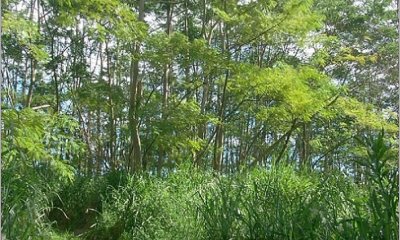

Mechanism
State 5 Invaded Overstory and Understory State may be restored to State 2 Naturalized Grassland State by mechanical clearing of overstory and understory vegetation. Introduced forage grasses may then be seeded or sprigged into the site. Herbicide applications will be necessary before and during pasture establishment to control reemerging weed species.
Model keys
Briefcase
Add ecological sites and Major Land Resource Areas to your briefcase by clicking on the briefcase (![]() ) icon wherever it occurs. Drag and drop items to reorder. Cookies are used to store briefcase items between browsing sessions. Because of this, the number of items that can be added to your briefcase is limited, and briefcase items added on one device and browser cannot be accessed from another device or browser. Users who do not wish to place cookies on their devices should not use the briefcase tool. Briefcase cookies serve no other purpose than described here and are deleted whenever browsing history is cleared.
) icon wherever it occurs. Drag and drop items to reorder. Cookies are used to store briefcase items between browsing sessions. Because of this, the number of items that can be added to your briefcase is limited, and briefcase items added on one device and browser cannot be accessed from another device or browser. Users who do not wish to place cookies on their devices should not use the briefcase tool. Briefcase cookies serve no other purpose than described here and are deleted whenever browsing history is cleared.
Ecological sites
Major Land Resource Areas
The Ecosystem Dynamics Interpretive Tool is an information system framework developed by the USDA-ARS Jornada Experimental Range, USDA Natural Resources Conservation Service, and New Mexico State University.




